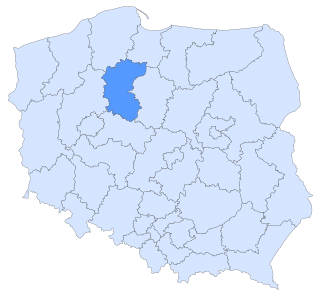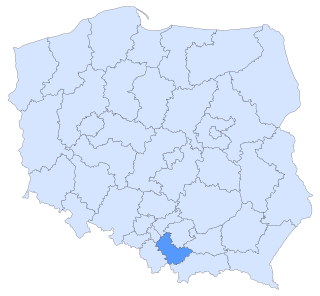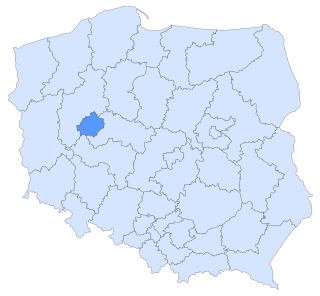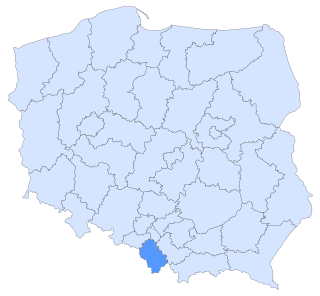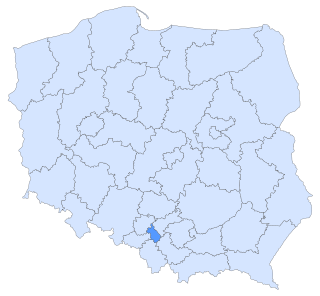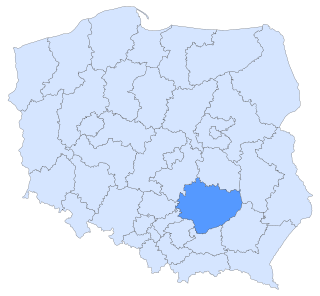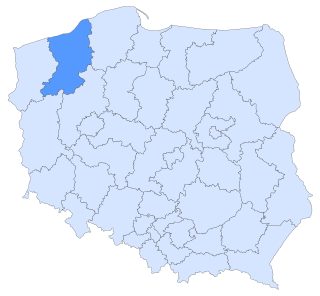
This article provides an overview of human sterilization by country. While many countries permit voluntary sterilization for contraceptive purposes, some permit it only for medical or eugenic purposes. Additional restrictions may include minimum age, parental or spousal consent. [1]
| Country | Compulsory | Voluntary for contraceptive purposes | Notes |
|---|---|---|---|
| | Illegal since 2014 when the Council of Europe Convention on Preventing and Combating Violence Against Women and Domestic Violence came into effect | ||
| | Illegal since 2014 when the Council of Europe Convention on Preventing and Combating Violence Against Women and Domestic Violence came into effect | Yes [1] | Since 1996 |
| | Yes [2] | As of 2009 | |
| | Yes [1] | Since 1977 | |
| | Illegal since 2014 when the Council of Europe Convention on Preventing and Combating Violence Against Women and Domestic Violence came into effect | Yes [1] | 25+ years for contraceptive purposes. Since 1974 |
| | Yes [2] | As of 2009 | |
| | For refugees | Yes [1] | |
| | Yes [1] | 35+years or at least two children | |
| | Illegal since 2014 when the Council of Europe Convention on Preventing and Combating Violence Against Women and Domestic Violence came into effect | ||
| | Yes [2] | As of 2009 | |
| | Illegal since 2014 when the Council of Europe Convention on Preventing and Combating Violence Against Women and Domestic Violence came into effect | ||
| | Yes [1] | ||
| | Illegal in most cases, although both the US and Brazilian governments have carried out sterilisation of Brazilians in the 20th and 21st centuries under various rationales | Yes [1] | 21+ years or <21 with two children for contraceptive purposes. Since 2022 |
| | Varies per province; sterilisations particularly of indigenous individuals performed in the 20th and 21st centuries | Yes [1] | Since 1979 |
| | Yes [2] | As of 2009 | |
| | Yes [1] | Since 2001 | |
| | De juris illegal but practiced, particularly against Uyghurs | Yes [1] | |
| | Yes [1] | Since 1984 | |
| | Yes [2] | As of 2009 | |
| | Yes [1] | Since 1999 | |
| | Yes [2] | As of 2009 | |
| | Illegal since 2014 when the Council of Europe Convention on Preventing and Combating Violence Against Women and Domestic Violence came into effect | Yes [1] | 35+ for contraceptive purposes. Since 1978 |
| | Yes [1] | 32+ years with several children for contraceptive purposes. Since 1968 | |
| | Illegal since 2014 when the Council of Europe Convention on Preventing and Combating Violence Against Women and Domestic Violence came into effect | ||
| | Yes [1] | 21+ years for contraceptive reasons. Since 2012 | |
| | Illegal since 2014 when the Council of Europe Convention on Preventing and Combating Violence Against Women and Domestic Violence came into effect | Yes [1] | 25+ years for contraceptive reasons. Since 1976 |
| | Yes [1] | 40+ years with one child, 35+ with three children, 30+ with five children or 25+ with six children for contraceptive purposes. Since 1972 | |
| | Yes [1] | 25+ years with three children for contraceptive purposes. Since 1992 | |
| | Yes [1] | Since 1979 | |
| | Illegal since 2014 when the Council of Europe Convention on Preventing and Combating Violence Against Women and Domestic Violence came into effect | Yes [3] | 35+years or at least 3 children. Since 1998 |
| | Yes [1] | ||
| | Illegal since 2014 when the Council of Europe Convention on Preventing and Combating Violence Against Women and Domestic Violence came into effect | Yes [1] | 30+ years or <30 years and three children for contraceptive purposes. Since 1985 |
| | Illegal since 2014 when the Council of Europe Convention on Preventing and Combating Violence Against Women and Domestic Violence came into effect | Yes [1] | Since 2001 |
| | Illegal since 2014 when the Council of Europe Convention on Preventing and Combating Violence Against Women and Domestic Violence came into effect | Yes [2] | As of 2009 |
| | Illegal since 2014 when the Council of Europe Convention on Preventing and Combating Violence Against Women and Domestic Violence came into effect | Yes [1] | |
| | Yes [1] | ||
| | Illegal since 2014 when the Council of Europe Convention on Preventing and Combating Violence Against Women and Domestic Violence came into effect | ||
| | No [1] | ||
| | Yes [1] | 35+ years with one child or 24–43 with three children for contraceptive purposes. | |
| | Yes [1] | 40+ years or 35+ years with three children or 30+ years with four children. | |
| | Illegal since 2014 when the Council of Europe Convention on Preventing and Combating Violence Against Women and Domestic Violence came into effect | Yes [1] | 25+ years for contraceptive purposes |
| | Yes [1] | 20+ (women) or 25+ (men) years for contraceptive purposes, less if couple has two children. Spousal consent and has to have had one child that is a year old | |
| | Yes [1] | ||
| | No | In 2021 sterilization was prohibited except for medical purposes. [4] | |
| | Illegal since 2014 when the Council of Europe Convention on Preventing and Combating Violence Against Women and Domestic Violence came into effect | ||
| | Yes [1] | ||
| | Illegal since 2014 when the Council of Europe Convention on Preventing and Combating Violence Against Women and Domestic Violence came into effect | Yes [1] | |
| | No [1] | Current law since 1996. In practice, contraceptive sterilizations are performed routinely, with health reasons given as the justification. [1] | |
| | Yes [1] | ||
| | Yes [5] | ||
| | Illegal since 2014 when the Council of Europe Convention on Preventing and Combating Violence Against Women and Domestic Violence came into effect | ||
| | Yes [1] | ||
| | Illegal since 2014 when the Council of Europe Convention on Preventing and Combating Violence Against Women and Domestic Violence came into effect | Yes [1] | 25+ years for contraceptive purposes. |
| | No [6] | ||
| | Illegal since 2014 when the Council of Europe Convention on Preventing and Combating Violence Against Women and Domestic Violence came into effect | Yes [1] | |
| | Yes [2] | As of 2009 | |
| | No | According to 1981 fatwa sterilization is forbidden for men and women. Temporary contraceptive methods may be permitted for health and economic reasons. [7] | |
| | Illegal since 2014 when the Council of Europe Convention on Preventing and Combating Violence Against Women and Domestic Violence came into effect | ||
| | Yes [1] | ||
| | Illegal since 2014 when the Council of Europe Convention on Preventing and Combating Violence Against Women and Domestic Violence came into effect | Yes [2] | As of 2009 |
| | Illegal since 2014 when the Council of Europe Convention on Preventing and Combating Violence Against Women and Domestic Violence came into effect | ||
| | Yes [1] | Woman must have many[ quantify ] children | |
| | Illegal since 2014 when the Council of Europe Convention on Preventing and Combating Violence Against Women and Domestic Violence came into effect | ||
| | Yes [2] | As of 2009 | |
| | No [1] | Since 1963 | |
| | Yes [2] | As of 2009 | |
| | Yes [1] | ||
| | Illegal since 2014 when the Council of Europe Convention on Preventing and Combating Violence Against Women and Domestic Violence came into effect | Yes [1] | |
| | Yes [1] | ||
| | Yes [1] | ||
| | Yes [1] | 35+ years with four children for contraceptive purposes. | |
| | Yes [1] | ||
| | Illegal since 2014 when the Council of Europe Convention on Preventing and Combating Violence Against Women and Domestic Violence came into effect | Yes [2] | As of 2009 |
| | Illegal since 2014 when the Council of Europe Convention on Preventing and Combating Violence Against Women and Domestic Violence came into effect | Yes [1] | 25+ years for contraceptive purposes |
| | Yes [1] | ||
| | Yes [1] | Five children for contraceptive purposes. | |
| | Yes [1] | ||
| | Yes [1] | ||
| | Yes [1] | ||
| | Illegal since 2014 when the Council of Europe Convention on Preventing and Combating Violence Against Women and Domestic Violence came into effect | No | Reproductive sterilisation of men (vasectomy) is legal in Poland, while other sterilization methods have been defined as a criminal act since 1997 [8] : 19 and remains so as of 5 September 2019 [update] , under Article 156 §1, which also covers making someone blind, deaf or mute, of the 1997 law. [9] : 64 The original 1997 law punished contraventions with a prison sentence of one to ten years [8] and the updated law as of 5 September 2019 [update] sets a prison sentence of at least 3 years. [9] The prison sentence is a maximum of three years if the sterilisation is involuntary, under Art. 156 §2. [8] [9] : 64 |
| | Illegal since 2014 when the Council of Europe Convention on Preventing and Combating Violence Against Women and Domestic Violence came into effect | Yes [1] | 25+ years for contraceptive purposes. |
| | Illegal since 2014 when the Council of Europe Convention on Preventing and Combating Violence Against Women and Domestic Violence came into effect | Yes [1] | |
| | Yes [1] | 35+ years or <35 with two children. | |
| | Illegal since 2014 when the Council of Europe Convention on Preventing and Combating Violence Against Women and Domestic Violence came into effect | ||
| | Illegal since 2014 when the Council of Europe Convention on Preventing and Combating Violence Against Women and Domestic Violence came into effect | ||
| | Yes [1] | ||
| | Illegal since 2014 when the Council of Europe Convention on Preventing and Combating Violence Against Women and Domestic Violence came into effect | Yes [1] | 35+ years for contraceptive purposes |
| | No [1] | ||
| | No [1] | ||
| | Yes [2] | As of 2009 | |
| | Yes [2] | As of 2009 | |
| | Yes [1] | ||
| | Yes [1] | Since 1973 | |
| | Illegal since 2014 when the Council of Europe Convention on Preventing and Combating Violence Against Women and Domestic Violence came into effect | Yes [1] | |
| | Yes [1] | ||
| | No [1] | Since 1990 | |
| | Illegal since 2014 when the Council of Europe Convention on Preventing and Combating Violence Against Women and Domestic Violence came into effect | Yes [1] | 25+ years for contraceptive purposes; 18–25 for eugenic, health (women only) or sex change reasons. |
| | Illegal since 2014 when the Council of Europe Convention on Preventing and Combating Violence Against Women and Domestic Violence came into effect | Yes [1] | |
| | Yes [1] | Since 1984 | |
| | Yes [1] | ||
| | Yes [1] | ||
| | Yes [1] | ||
| | Yes [1] | Since 1973. At least four children required. | |
| | Yes [1] | Since 1983 | |
| | Yes [1] | Since 1993 | |
| | Illegal since 2014 when the Council of Europe Convention on Preventing and Combating Violence Against Women and Domestic Violence came into effect | ||
| | No | Women can opt for sterilisation if they have had "any medical illness that could endanger their life in future due to pregnancy". [10] | |
| | Illegal since 2014 when the Council of Europe Convention on Preventing and Combating Violence Against Women and Domestic Violence came into effect | Yes [1] | |
| | Yes [1] | ||
| | Yes [2] | As of 2009 | |
| | No [1] | Since 1971 | |
| | Yes [1] | Since 1989 | |
| | Yes [1] | Since 1965 | |
| | Yes [1] | Since 1985 | |



